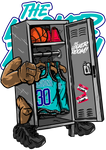
18 Wheelers, Trailers & Cabs
A vehicle wrap is a customized, vinyl-based graphic or advertising design that is applied directly to the exterior surface of a vehicle, such as a car, truck, van, bus, or even a boat or motorcycle. The process involves wrapping the vehicle's body panels, windows, and sometimes even the roof with a large sheet of vinyl film that has been printed with a specific design, color, pattern, or advertisement.
Vehicle wraps serve various purposes, including:
-
Advertising: Businesses often use vehicle wraps as a mobile form of advertising to promote their products, services, or brand. The large and eye-catching graphics on the vehicle can attract attention and potentially reach a wide audience as the vehicle travels through different areas.
-
Personalization: Individuals may choose to wrap their vehicles with unique designs, patterns, or colors to personalize their appearance. This is a popular option among car enthusiasts and those seeking a distinctive look for their vehicles.
-
Protection: The vinyl wrap can provide a layer of protection to the vehicle's original paint, shielding it from minor scratches, abrasions, and other environmental elements.
-
Temporary Changes: Vehicle wraps can be used to change the appearance of a vehicle temporarily, allowing for easy removal and replacement of the wrap when desired.
The process of creating and applying a vehicle wrap typically involves several steps:
-
Design: A graphic designer creates a custom design that fits the dimensions of the specific vehicle. The design can include text, images, logos, and other visual elements.
-
Printing: The design is then printed onto large sheets of vinyl using specialized printers that can produce high-quality, vibrant graphics.
-
Preparation: The vehicle's exterior is thoroughly cleaned and prepared to ensure a clean and smooth surface for the vinyl to adhere to.
-
Installation: Skilled technicians apply the vinyl sheets to the vehicle's surface, carefully stretching and shaping the material to fit the contours of the vehicle. This requires precision and expertise to avoid wrinkles, bubbles, or misalignment.
-
Trimming: Excess vinyl is trimmed away from edges, seams, and other areas to create a seamless and professional appearance.
-
Finishing: Once the wrap is applied, it may be heated and smoothed to ensure proper adhesion and to eliminate any remaining imperfections.
-
Curing: The wrap needs time to fully adhere and settle onto the vehicle's surface. Depending on the type of vinyl used, this curing process may take a few days.
Vehicle wraps can be full wraps, covering the entire vehicle, or partial wraps, covering specific sections. They offer a versatile and eye-catching way to transform a vehicle's appearance or communicate a message.


